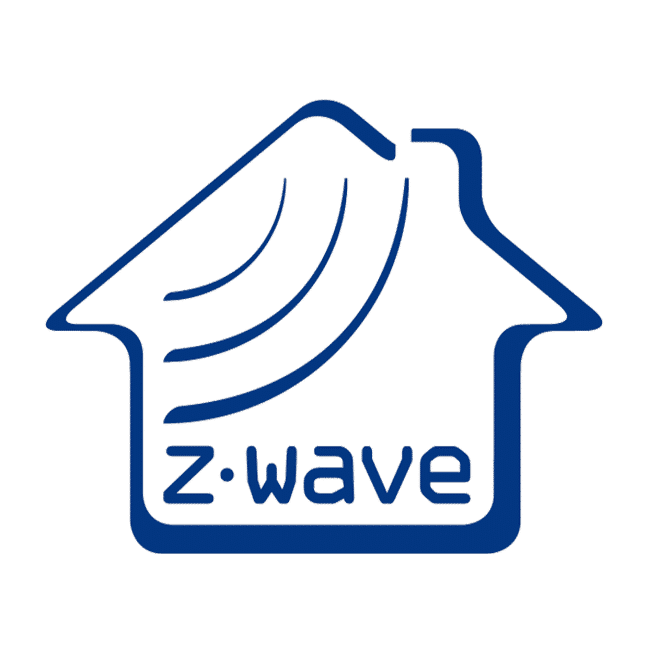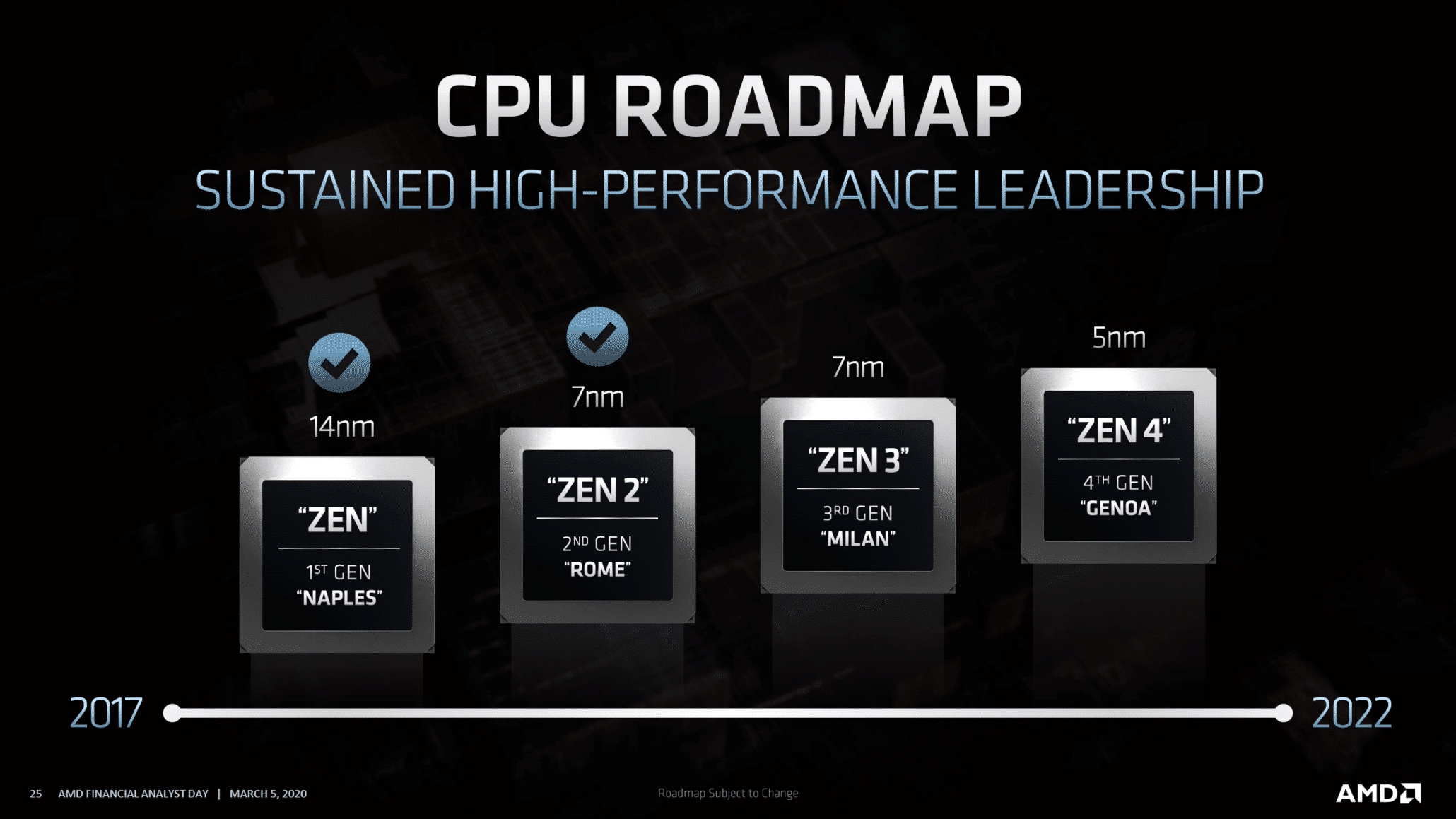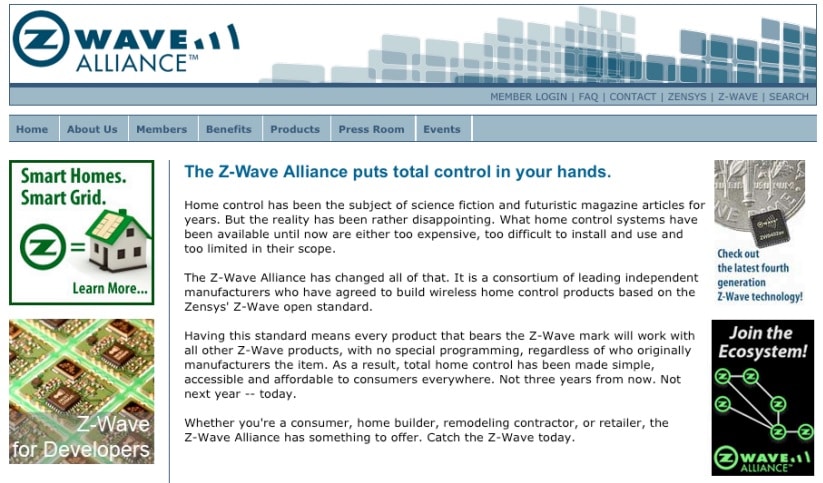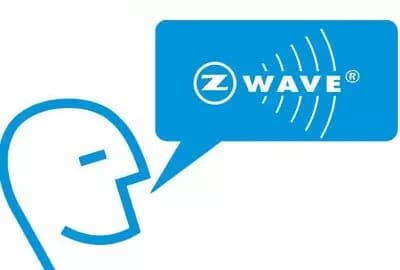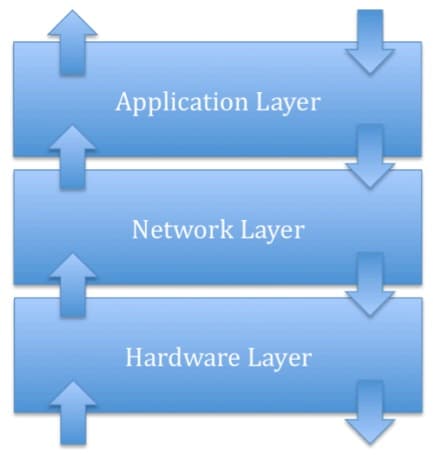معرفی خانه هوشمند Z-Wave
خانه هوشمند Z-Wave یک استاندارد بین المللی برای اتوماسیون بی سیم خانه است. اتوماسیون خانگی اجازه می دهد تا همه عملکردهای مربوط به برق مانند نور ، گرمایش ، آشپزی ، سرمایش ، امنیت و غیره را به یکدیگر متصل کرده و اتوماسیون این عملکردها را اعمال کنیم. این باعث امنیت بیشتر و راحتی بیشتر در خانه ها و ادارات می شود. اتوماسیون خانه همچنین به صرفه جویی در انرژی و سایر منابع کمک می کند.
اتصال همه این عملکردها را می توان با استفاده از سیم یا فناوری بی سیم انجام داد. به ویژه برای اتوماسیون خانگی سیمی ، اتوبوس موسوم به European Installation یا KNX بسیار محبوب و استاندارد defacto است.
راه حل های سیمی بسیار قابل اعتماد هستند ، اما نیاز به برنامه ریزی مناسب سیم ها و دستگاه ها در حین ساخت خانه و نصب کلیه خدمات دارد.
برای مقاوم سازی یا راه حل های جزئی ، سیستم اتوماسیون خانگی سیمی قابل استفاده نیست. در اینجا راه حل های بی سیم وارد بازی می شوند. متأسفانه هنوز هیچ استاندارد مشخصی برای پروتکل اتوماسیون خانگی بی سیم در بازار وجود ندارد.
الزامات سیستم بی سیم برای کنترل خانه هوشمند Z-Wave
برای شناسایی یک فناوری بی سیم خوب برای اتوماسیون خانه ، لیستی از الزامات باید در نظر گرفته شود. اینها هستند:
1. قابلیت اطمینان ارتباطات:
عملکردهای مهم مانند پنجره کور یا حتی تاسیسات امنیتی باید از طریق سیگنال بی سیم کنترل شوند. بنابراین ضروری است که همه پیامها به مقصد برسند و توسط دستگاه دریافتی به فرستنده تأیید شود. همه پروتکل های بی سیم با این الزام مطابقت ندارند.
2. امنیت ارتباطات:
باید تضمین شود که شخص ثالث غیرمجاز نمی تواند – عمداً یا تصادفی – ارتباط سیستم بی سیم را درک یا دخالت دهد. به طور معمول رمزگذاری فناوری ها و مکانیزم های دست دادن ، این امر را تضمین می کند.
3. انتشار کم رادیو:
فناوری بی سیم برای اتوماسیون خانه در اتاق نشیمن استفاده می شود. بنابراین مسائلی مانند انتشار الکترومغناطیسی باید مورد توجه قرار گیرد.
4. استفاده ساده:
اتوماسیون خانگی باید زندگی کاربر را آسان تر و پیچیده تر نکند.
5. قیمت مناسب:
6. حفاظت از سرمایه گذاری:
راه حل های اتوماسیون خانگی به طور معمول در حین ساخت ساختمانهای جدید یا بازسازی نصب می شوند و نیاز به رعایت چرخه عمر معمولی محصول تجهیزات نصب خانه دارند. بسیار مهم است که مطمئن شوید کاربر می تواند دستگاه ها را تعویض کند یا سیستم های خود را حتی پس از سالها گسترش دهد و با مشکلات سازگاری روبرو نشود.
7. قابلیت همکاری:
عملکردهای اتوماسیون خانگی مانند گرمایش ، روشنایی یا کنترل پنجره با محصولات فروشندگان مختلف با تخصص در زمینه مربوطه اجرا می شود. قابل قبول نیست که مجبور شوید به یک فروشنده پایبند باشید و به عنوان مثال فناوری گرمایشی را از فروشنده ای که دارای تخصص اصلی در زمینه روشنایی است بخرید ، فقط برای فعال کردن قابلیت همکاری. هر فناوری بی سیم نصب شده باید مستقل از چندین تولید کننده استفاده شود.
1.2 جایگزین برای کنترل بی سیم خانه
در بازار فن آوری های مختلف بی سیم وجود دارد که کم و بیش با الزاماتی که ذکر شد مطابقت دارد.
1.2.1 کنترل آنالوگ با استفاده از باند فرکانسی 27 مگاهرتز یا 433 مگاهرتز
سیستم های بی سیم آنالوگ ، که از فروشندگان بدون نام در دسترس هستند ، قیمت بسیار پایینی دارند. تمرکز شدید بر قیمت منجر به کیفیت پایین تولید و امنیت بسیار ضعیف می شود. از آنجا که از یک فرکانس استفاده می شود که با رادیو بچه نگهبان یا گیرنده های CB مشترک است ، اختلالات معمولی است و رفتار این تجهیزات غیرقابل پیش بینی می شود. محصولات آنالوگ به طور گسترده ای برای نصب های جدی تر در خانه ها استفاده نمی شود.
1. قابلیت اطمینان ارتباطات: خیر
2. امنیت ارتباطات: خیر
3. انتشار کم رادیویی: بله
4. استفاده ساده: بله
5. قیمت پایین: بله
6. حمایت از سرمایه گذاری: خیر
7. قابلیت همکاری: خیر
پروتکل های اختصاصی فروشندگان مختلف
چندین تولید کننده راه حل اختصاصی خود را برای کنترل بی سیم توسعه داده اند و برخی از آنها محصولات متنوعی را ارائه می دهند. برخی از نامهای این دسته عبارتند از Intertechno ، Free Control (Kopp) ، Homeeasy ، FS 20 ، Homematic (هر دو ELV) یا Xcomfort (Eaton). اکثر این پروتکل ها از فرکانس 868 مگاهرتز استفاده می کنند و به صورت دیجیتالی ارتباط برقرار می کنند.
برخی از پروتکل ها یک ارتباط دو طرفه را پیاده سازی کرده اند. بزرگترین عیب این راه حلها محدودیت تعداد کمی یا حتی یک فروشنده است. اگرچه این ممکن است برای نصب “از یک طرف” جذاب باشد ، اما برای دسترسی طولانی مدت به قطعات و پایداری پروتکل خطر بزرگی را به همراه دارد. چندین فروشنده قبلاً تمایل خود را برای تغییر پروتکل ها و قدیمی شدن محصولات قبلی ثابت کرده اند.
1. قابلیت اطمینان ارتباطات: تا حدودی
2. امنیت ارتباطات: تا حدودی
3. انتشار کم رادیویی: بله
4. استفاده ساده: بله
5. قیمت پایین: بله
6. حمایت از سرمایه گذاری: خیر
7. قابلیت همکاری: خیر
خط برق
در اصطلاح ارتباط برق از خطوط اصلی 230 ولت به عنوان رسانه ارتباطی استفاده می شود. این یک فناوری بی سیم نیست اما با فناوری های اتوماسیون بی سیم رقابت می کند.
اولین و هنوز مهمترین فناوری ارتباطات خطوط برق X10 نام دارد. تقریباً 20 سال پیش در ایالات متحده معرفی شد و هنوز هم کاربران زیادی در ایالات متحده و اروپا دارد. X10 به پایان عمر خود رسیده است زیرا پهنای باند بسیار محدود است و پروتکل با منبع تغذیه سوئیچ شده رایانه های شخصی که نویز الکتریکی زیادی را به شبکه برق تزریق می کند ، مشکل دارد.
فناوری ارتباطات مدرن خط برق از کدگذاری سیگنال دیجیتال استفاده می کند و در برابر نویز قوی تر است. متأسفانه چندین “استاندارد” مختلف وجود دارد که با یکدیگر سازگار نیستند. علاوه بر این سازگاری با مقررات CE در مورد انتشار کابل مشکوک است.
ابتکار دیگر مبتنی بر خط برق Digitalstrom نام دارد. این تحولی از دانشگاه زوریخ است و تا حدودی در مطبوعات آگاهی پیدا کرده است. تا به امروز این فناوری هنوز ثبات خود را در محیطهای واقعی فراتر از نمونه های اولیه ثابت نکرده است.
1. قابلیت اطمینان ارتباطات: مشکوک
2. امنیت ارتباطات: مشکوک
3. انتشار کم رادیویی: بله
4. استفاده ساده: بله
5. قیمت پایین: بله
6. حمایت از سرمایه گذاری: بله
7. قابلیت همکاری: بله
خانه هوشمند ZigBee
“ZigBee” یک بازیکن جدید در بلوک است ، با اولین محصولات در بازار در آغاز سال 2005.
“ZigBee” یک پروتکل شبکه بی سیم باز است که به طور مشابه عمل می کند ، اما بهتر از بلوتوث است. در حالی که بلوتوث فقط با هفت دستگاه جفت می شود ، “ZigBee” می تواند با صد دستگاه دیگر جفت شود! بخشی از عملکرد بر اساس مشخصات IEEE IEEE 802.15.4 است که به شما امکان می دهد لوازم خانگی ، حسگرها و غیره را در فواصل کوتاه (10 تا 100 متر) متصل کنید.
نکته منفی این است که دستگاه های ZigBee از تولید کنندگان مختلف با یکدیگر سازگار نیستند زیرا Zigbee فقط لایه های پروتکل پایین (لایه رادیویی) را استاندارد می کند ، در حالی که تولید کنندگان مختلف لایه های نرم افزاری بالاتر خود را تعریف کرده اند.
1. قابلیت اطمینان ارتباطات: معمولاً بله
2. امنیت ارتباطات: بله
3. انتشار کم رادیویی: بله
4. استفاده ساده: –
5. قیمت پایین: هنوز نه
6. حمایت از سرمایه گذاری: –
7. قابلیت همکاری: خیر
خانه هوشمند En-Ocean
EnOcean GmbH یک شرکت جداگانه از شرکت آلمانی Siemens AG است که در سال 2001 تأسیس شد. بازیگران و حسگرهای EnOcean بدون باتری با استفاده از تکنیک های جمع آوری انرژی کار می کنند. در همین حال ، بیش از 100 تولید کننده ، عمدتا از اروپا ، EnOcean را انتخاب می کنند. Pricewise Enocean سعی می کند با سطح قیمت بالاتر KNX هماهنگ شود.
1. قابلیت اطمینان ارتباطات: خیر
2. امنیت ارتباطات: خیر
3. انتشار کم رادیویی: بله
4. استفاده ساده: بله
5. قیمت پایین: ندارد
6. حمایت از سرمایه گذاری: بله
7. قابلیت همکاری: بله
خانه هوشمند Z-Wave
فناوری خانه هوشمند Z-Wave کلید کنترل کامل بر امنیت خانه و راه حل های انرژی شما با حداقل سر و صدا است. با سیستم اتوماسیون خانگی خانه هوشمند Z-Wave، می توانید تمام عناصر الکتریکی اصلی خانه مانند نور ، گرمایش ، آشپزی ، سرمایش و حتی امنیت خانه خود را برنامه ریزی کنید.
مزایا به اینجا ختم نمی شود ، اگرچه سیستم پیچیده ای است ، اما استفاده از آن ساده است و گزینه ای کم مصرف و مقرون به صرفه است.
این سیستم از طریق کنترل از راه دور کار می کند و از امواج رادیویی کم توان استفاده می کند. شبکه مش آن تمام مناطق خانه را پوشش می دهد ، زیرا امواج رادیویی به راحتی از طریق دیوارها ، کف و مبلمان عبور می کنند و اتصال را 100٪ قابل اعتماد می کند.
این آزادی اتصال به این معنی است که شما به راحتی می توانید با یک بسته اصلی شروع کنید و آن را در طول زمان با اجزای اضافی تقویت کنید ، سیستم انرژی و امنیت خانه خود را منحصر به فرد در خانه و به راحتی خود شخصی سازی کنید. هر ماژول Z-Wave می تواند به عنوان یک تکرار کننده RF عمل کند و دستورات می توانند حداکثر در چهار دستگاه مسیریابی کنند.
این سیستم حداکثر برد 400 فوت را در اختیار سیستم قرار می دهد و مسیریابی به طور خودکار مدیریت می شود. قطعات شامل سوکت ، سوئیچ ، کنترل از راه دور و Z-Wave Internet Gateway VERA است که می توانید صحنه ها ، رویدادها و تنظیمات زمان سنج را برای شخصی سازی لوازم برقی خود مانند خانه خود ایجاد کنید. از نظر قیمت محصولات خانه هوشمند Z-Wave بالاتر از راه حل های اختصاصی برخی از تولید کنندگان است ، اما به وضوح پایین تر از راه حل های قابل مقایسه Zigbee یا Enocean است.
1. قابلیت اطمینان ارتباطات: بله
2. امنیت ارتباطات: بله
3. انتشار کم رادیویی: بله
4. استفاده ساده: بله
5. قیمت پایین: هنوز نه
6. حمایت از سرمایه گذاری: بله
7. قابلیت همکاری: بله
تاریخچه و ویژگی های خانه هوشمند Z-Wave
خانه هوشمند Z-Wave توسعه شرکت دانمارکی Zen-Sys است. دو مهندس دانمارکی Zen-Sys را در پایان دهه نود قرن گذشته تاسیس کردند. از ایده اولیه توسعه راه حل اتوماسیون خانگی خود ، این شرکت به زودی تبدیل به یک ارائه دهنده تراشه شد که ASIC اتوماسیون خانگی را به همراه سیستم عامل خود به سایر تولیدکنندگان می فروخت. این یک اکوسیستم از تولید کنندگان با محصولات سازگار را تشکیل داد.
شکل 1.1: تراشه Zen-Sys نسل سوم
اولین نسل سخت افزار Zensys از سال 2003 فروخته شد – در آن زمان هنوز به عنوان ترکیبی از یک میکروکنترلر استاندارد (Atmel) و یک گیرنده رادیویی. این پلت فرم سخت افزاری طی سالهای بعد با نسل تراشه های 100 (2003) ، 200 (2005) ، 300 (2007) و 400 آخرین (2009) توسعه یافت.
Zen -Sys اولین مشتریان بزرگ را در ایالات متحده پیدا کرد که در آن – به لطف X10 – بازار و آگاهی مربوطه از قبل برای اتوماسیون خانه وجود داشت.
اولین تولید کننده بزرگتر دستگاه خانه هوشمند Z-Wave در اروپا ، تولید کننده سوئیچ آلمانی Merten (که اکنون بخشی از اشنایدر الکتریک است) بود ، که سیستم روشنایی مبتنی بر Z-Wave CONNECT را به صورت عمومی در پایان سال 2007 معرفی کرد. از ابتدای سال 2009 پویایی بازار در اروپا به شدت افزایش یافته است و خانه هوشمند Z-Wave نیز پذیرای بیشتری در آسیا دارد. این امر با تصاحب Zen-Sys توسط تولید کننده تراشه تحت تأثیر آسیا Sigma Designs نیز تقویت می شود. سیگما در دسامبر 2008 Zen -Sys را سرمایه گذاری کرد – از جمله دیگر سرمایه گذاری شده توسط Intel Ventures -.
شکل 1.2: وب سایت اتحاد Z-Wave (از سال 2009)
یکی دیگر از نشانه های دیگر توسعه Z-Wave ، پایه گذاری اتحاد Z-Wave در سال 2005 بود. در این اتحاد صنعتی ، تولیدکنندگان محصولات سازگار با خانه هوشمند Z-Wave گرد هم آمده اند. این اتحاد در پایان سال 2009 بیش از 200 تولید کننده داشت. اتحاد Z-Wave استاندارد را افزایش می دهد و همچنین از رویدادهای بازاریابی مرکزی مانند نمایشگاه های تجاری مراقبت می کند. وظیفه اصلی دیگر اتحاد ZWave حفظ قابلیت همکاری دستگاه ها بر اساس پروتکل Zave است. این توسط یک برنامه صدور گواهینامه تضمین می شود ، که منجر به ایجاد یک لوگو بر روی دستگاه می شود که انطباق با پروتکل خانه هوشمند Z-Wave را تضمین می کند.
شکل 1.3: برنامه سازگاری خانه هوشمند Z-Wave
در حالی که همه تولیدکنندگان محصولات خود را بر اساس سخت افزار ZenSys بنا می کنند ، آزادی اجرای برنامه را دارند. Zen-Sys سطح رادیو را با کدگذاری خط تعریف می کند و همچنین عملکردهایی را برای سازماندهی خود شبکه تعریف می کند. کتابخانه های سیستم عامل از پیش تدوین شده این کار را انجام می دهند. سازندگان نمی توانند آنها را تغییر دهند.
خانه هوشمند Z-Wave همچنین عملکردهای خاص برنامه را تعریف می کند (به عنوان مثال سوئیچ A با فشار دادن دکمه B روشن می شود) ، اما سازندگان مسئول اجرای آن هستند. اکثر تولیدکنندگان عملکردها را در لایه برنامه بهینه سازی و ارتقا می دهند. از این رو ، آزمایش های صدور گواهینامه متمرکز می شوند تا مطمئن شوند که عملکرد لایه برنامه دستگاه با استاندارد مطابقت دارد تا امکان کارکرد و تضمین قابلیت کارکرد در محدوده عملکرد و محدوده تولیدکنندگان را تضمین کند.
مدل لایه عمومی ارتباطات بی سیم
سیستم های بی سیم پیچیده هستند و از تعداد زیادی توابع تشکیل شده اند. همانطور که قبلاً خوانده اید ، مسیرهای متعددی برای انتخاب وجود دارد ، اما مهمتر از همه ، هر چیزی را که انتخاب می کنید ، باید با محصولاتی که استفاده می کنید سازگار باشد. برای کمک به مدیریت تعداد زیادی از توابع ، تقسیم آنها به لایه های مختلف مفید است.
پایین ترین لایه همیشه برای رسانه های ارتباطی استفاده می شود. در مورد پروتکل بی سیم ، این هوا است. بالاترین لایه همیشه کاربر است ، در این مورد ، یک انسان است. در مورد خانه هوشمند Z-Wave یک ساختار سه لایه مفید بوده است.
1. لایه رادیوئی:
این لایه راه را مشخص می کند. یک سیگنال بین فرستنده و گیرنده مبادله می شود. این شامل مواردی مانند فرکانس ، رمزگذاری ، دسترسی به سخت افزار و غیره است.
2. لایه شبکه:
این لایه نحوه مبادله داده های کنترل واقعی بین دو شریک ارتباطی را مشخص می کند. این شامل مواردی مانند آدرس دهی ، سازماندهی شبکه ، مسیریابی و غیره است.
3. لایه کاربرد:
این لایه مشخص می کند که کدام پیامها باید با برنامه های خاص مانند تغییر چراغ یا افزایش دمای دستگاه گرم کننده مبادله شوند.

